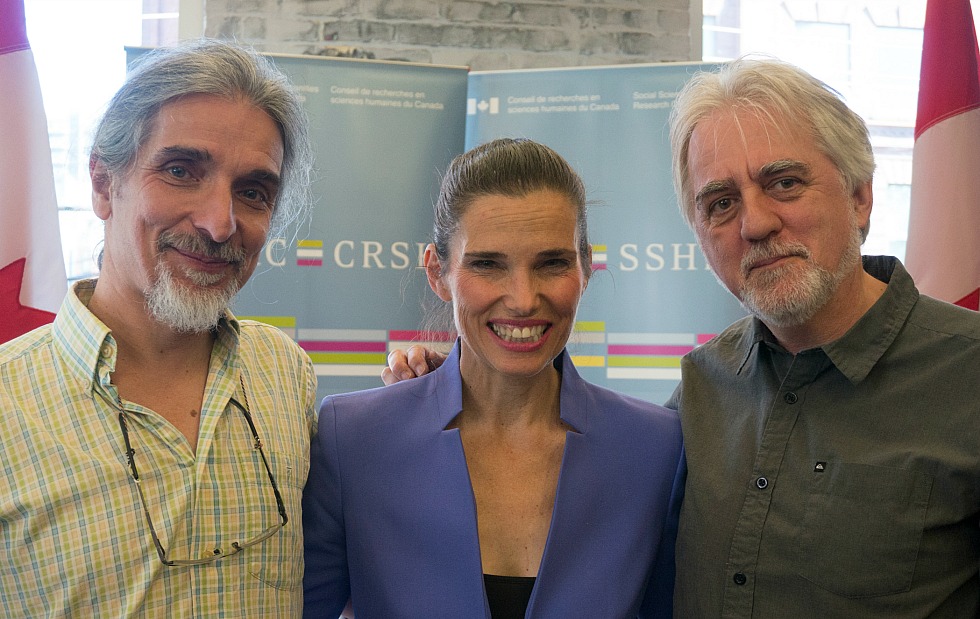Math professor aims to “bridge the gap” between theory and practice

McMaster math professor, Miroslav Lovric (right), with Federal Science Minister Kirsty Duncan, and George Brown researcher Taras Gula at a recent Social Sciences and Humanities Research Council (SSHRC) funding announcement. Lovric and Gula received $132,000 in SSHRC funding to create a series of modules to help students, health care professionals, and patients better understand and communicate numeric data in the health care setting.
BY Erica Balch
August 25, 2016
Imagine you’ve just been told that you have a serious condition that requires surgery. Your doctor tells you there’s a 10% chance the operation will be unsuccessful. Do you opt for the surgery?
What if, instead, your doctor told you the success rate for the surgery was 90%? Would you be more likely to have the operation?
“It’s mathematically the same information, but framed very differently,” says Miroslav Lovric, a professor in McMaster’s Department of Mathematics and Statistics. “Being able to put numbers in context is so important– if you present the information in a positive frame, a patient is more likely to go for it.”
Lovric says health care professionals regularly encounter situations that require them to interpret and communicate numbers, assess probabilities and risks, and calculate quantities– math skills that, according to Lovric, a surprising number of health professionals have difficulty applying in the health care setting.
“Medical professionals get lots of applied experience in many areas–they go to anatomy labs, they practise surgery,” says Lovric. “Quantitative literacy is just one aspect that the research and medical practitioners tell us could be improved. ”
To help address the issue, Lovric and Taras Gula, a researcher from George Brown College, recently received a $132,000 Social Sciences and Humanities Research Council (SSHRC) grant* to create a series of modules aimed at helping health care professionals, students, and even patients, learn quantitative literacy– the ability to read, understand, process and communicate numeric information.
According to Lovric, while a large number of health professionals understand mathematical concepts– in many cases having completed grade 12, or university level math– their training doesn’t necessarily prepare them to apply these concepts in the health care environment.
“They’ve learned to do percentages, they how know how to add fractions, they understand decimal numbers, but in contexts that are very abstract– so abstract, that making those ties to real-life situations becomes very difficult. These modules will help them to bridge the gap.”
To develop the modules, Lovric and Gula will work with McMaster and George Brown College students as well as PhD and post-doctorate students, to complete a literature review, followed by a series of surveys and focus groups with medical students, health care professionals, instructors and patients to identify specific situations in which quantitative reasoning is required.
These efforts will produce a workable conceptualization of quantitative literacy in health-related settings.
Once the curriculum has been developed, students and interactive media experts in George Brown College’s School of Design will create the modules. Multiple versions of the modules will be created for different audiences, which Lovric says could include students, instructors, medical professionals and even patients.
“You may not be an expert in math, but when you’re in front of a physician and you have a medical condition, you’re very interested in finding out what’s going on,” says Lovric. “A patient is eager to find out the information in a way they can process and understand.”
The project will be developed over the next three years. Once completed, the modules will be made publicly available online.
*Lovric and Gula also received an extra $40,000 in funding for their project from George Brown College.
